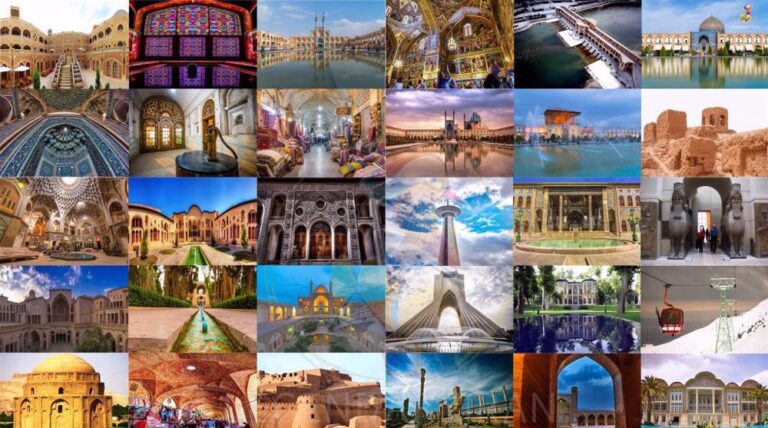Iranian-Russian relations have expanded in all directions over the past two decades, embracing a broader level of cooperation.
Historically, relations between Russia and Iran have been multifaceted and have fluctuated between cooperation and conflict. The two countries have a long history of geographical, economic and socio-political exchanges, and their relations have often been unstable and at other times stagnant.
This exchange has grown significantly in recent times, with Moscow and Tehran espousing a more pluralistic view of the international order and a convergence of policy visions in favor of sovereign internationalism over liberal interventionism.
The ties between the two countries date back to 2015, when they were aligned in their efforts to prevent Western powers from toppling Syrian President Bashar al-Assad. Their joint campaign laid the foundation for a broader expansion of channels between Moscow and Tehran.
Since President Ebrahim Raeishi took office in 2021, Iran has seen several changes in its foreign policy pursuits and overall agenda, including an increased focus on ties with Russia and China.
In contrast to Iran’s former President Hassan Rouhani, Raeisi was skeptical of U.S. intentions, which betrayed a rare moment of Iranian trust by unilaterally withdrawing from an international nuclear agreement, and limited contacts with the West.
The new administration’s “Look East” policy instead produced immediate results, and Russia awarded Iran several “wins,” including facilitating its membership in the Shanghai Cooperation Organization, which helped expand Iran’s influence and strengthen its resilience in the face of Western pressure.
The budding relationship has quickly grown closer, with both countries removing visa requirements for tourists in 2021. Under the agreement, citizens of both countries can visit each other for tourism purposes without obtaining a visa, in groups of up to 50 people and for trips of up to 15 days.
The agreement came into force in October 2023, with the first groups of Iranian tourists arriving in Russia’s North Caucasus region, which includes the republics of Dagestan, Chechnya, Ingushetia and North Ossetia.
Tourism is important to both Iran and Russia. Before the COVID-19 pandemic, Russia’s tourism capacity was over 10 million people and generated $10 billion in revenue. The country aimed to increase this to $28.6 billion by 2035, but the war with Ukraine derailed those plans.
Tourism is also important to Iran, one of the world’s richest countries in terms of historical, natural and recreational attractions. Iran has more than 4,000 tourist attractions and is ranked 10th in terms of ancient and historical attractions, 5th in terms of natural attractions and 3rd in terms of diversity of handicrafts.
According to the World Travel and Tourism Council (WTTC), Iran’s tourism industry is expected to double in size in 2022, employing 1.44 million people for the first time.
Tourism accounted for about 4.6% of Iran’s economy in 2022. Revenues have been growing steadily, increasing from about $1.9 billion in 2020 to $2.5 billion in 2021 and $6.2 billion in 2022.
Tourism is an area of interest for both Iran and Russia and is frequently featured in cooperation agreements between the two countries, for example, a memorandum of understanding on tourism cooperation was signed in April 2023 aimed at strengthening tourism in the country.
Its objectives are to help increase tourist numbers between the two countries, develop human resources in the tourism sector and support innovation in the sector, in particular through the presentation of cultural heritage, natural and recreational attractions, the exchange of experts, experience and information, the development of historical, cultural and natural tourism and the creation of new marine tourism routes.
Tourist traffic between Iran and Russia has always been active due to their geographical proximity. In 2022, the number of tourists between the two countries doubled compared to the previous year, reaching 42,400. Among tourists who visited Russia in the first half of 2023, Iranians were the fifth most numerous after China, Turkey, Turkmenistan and Germany. In the same period, about 22,000 Russian tourists visited Iran on a visa.
In addition to the economic benefits, tourism cooperation will play an important role in the future of political and cultural relations between Iran and Russia.
Politically, Western sanctions on Russia over the war in Ukraine and on Iran following the US withdrawal from the nuclear deal have limited both countries’ access to global energy markets.
The use of local currency as an important tool to counter sanctions is important to maintain and strengthen tourism relations and promote smooth trade. Furthermore, tourism plays a very important role in changing mutual perceptions between two countries and thus facilitating communication.
“Just as there are Iranophobes in Russia, there are Russophobes in Iran,” said Kazem Jalali, Iran’s ambassador to Moscow. “I believe this phobia is rooted in Western insinuations to prevent the two countries from taking advantage of each other’s capabilities.”
Tourism is crucial for Iran, especially in the face of sanctions. The country has requested visa-free entry arrangements with over 50 countries. A complete elimination of visa requirements with Russia would boost both countries’ capabilities in this sector and open a new chapter in bilateral relations.
There is also room for Iran to increase air traffic, improve infrastructure, especially in the transport sector, and strengthen cooperation between security agencies, including the police and tourism agencies.
Meanwhile, Ambassador Jalali advised Russia to deepen exchanges with Iranians visiting the country, improve tourism capacity, increase air flights between Tehran and Moscow and St. Petersburg and Tehran, and open air routes between the Iranian cities of Rasht, Tabriz, Sari, Kish, Shiraz and Astrakhan and Russia’s Kazan.

